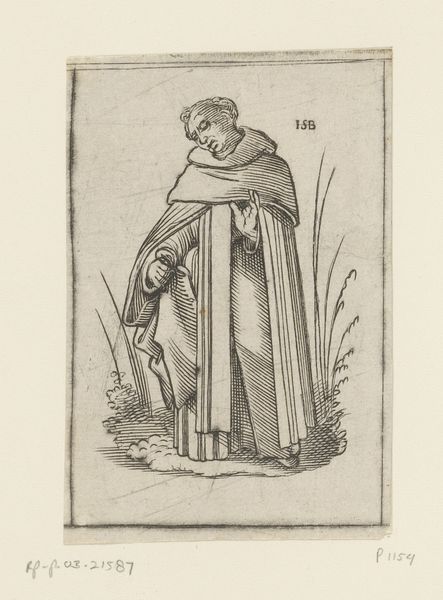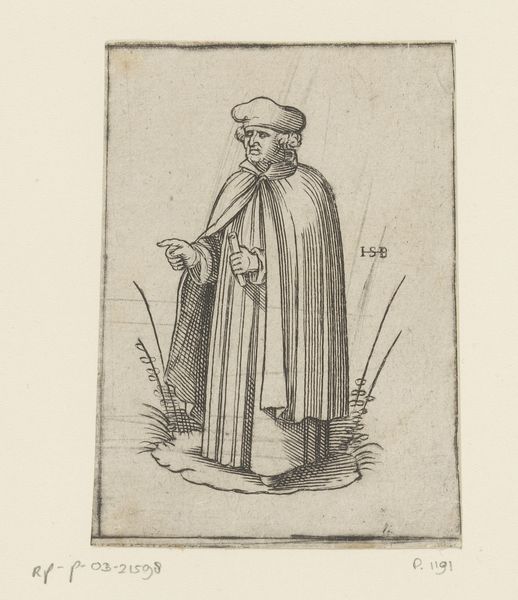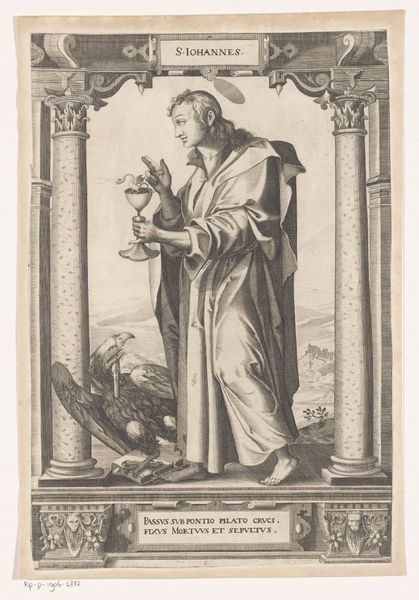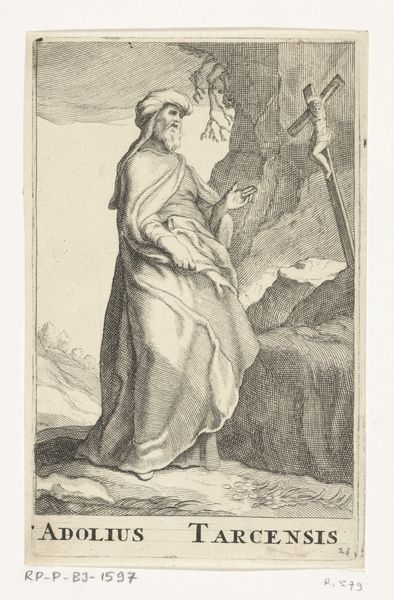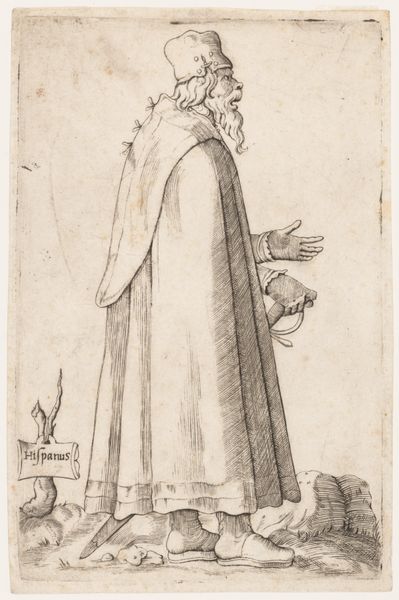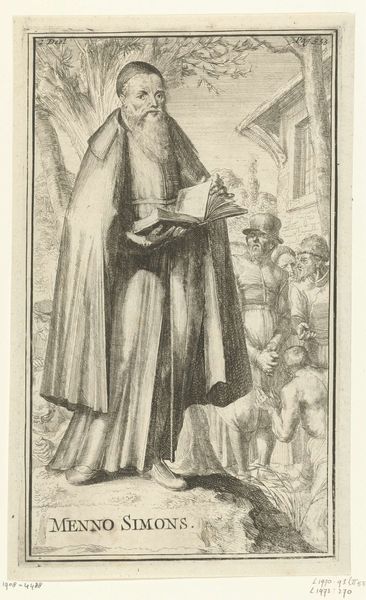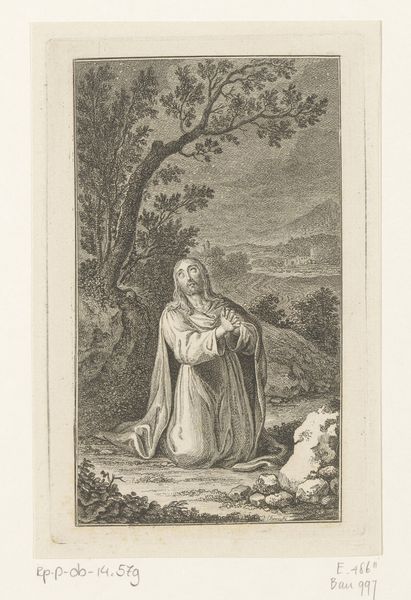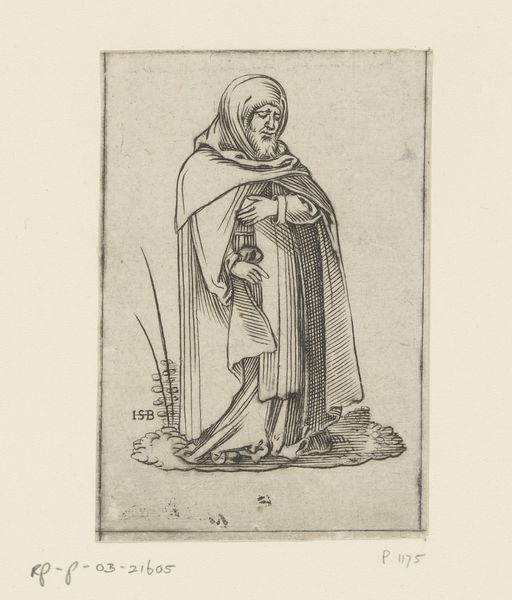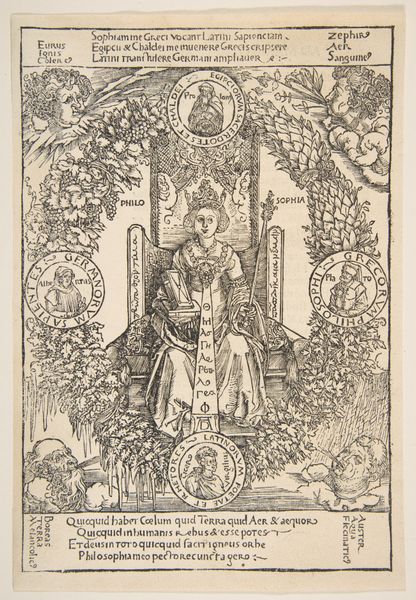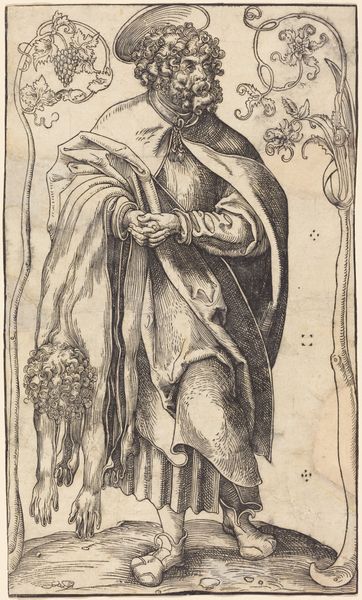
print, engraving
#
baroque
# print
#
old engraving style
#
figuration
#
cross
#
history-painting
#
engraving
Dimensions: height 156 mm, width 97 mm
Copyright: Rijks Museum: Open Domain
Editor: Here we have Raffaello Schiaminossi’s “Saint Didacus of Alcalá," from 1601, an engraving. It feels quite somber; the textures created by the engraving are fascinating. What do you make of this piece? Curator: This engraving speaks volumes about the means of art production in the early 17th century. Consider the labour involved in creating the metal plate and then producing these prints. This wasn’t just about devotional imagery; it was about a complex system of workshops, materials, and trade. Who was the audience and what would their class or religious status tell us about its distribution and consumption? Editor: That's an interesting point. I was focused on the religious aspects, but the context of its creation makes so much sense. How does that challenge the typical idea of “high art”? Curator: Engravings like these blur the line between art and craft. Think about the skill required versus the 'artistic genius' often attributed to painting. We're dealing with reproducible imagery here, made possible by a specific set of material conditions and craft practices. Were the materials used widely available at the time? Did the cost put these images within reach of more people than a painting would? Editor: So, the very nature of a print makes it about accessibility and production, not just religious symbolism? Curator: Precisely. While religious symbolism is present, its dissemination hinges on material production. Look at the quality of the engraving: This wasn’t a mass-produced, cheap image, but a skillfully crafted object intended for a specific market that could appreciate and afford it. Is it Baroque because that’s how things *should* look, or does it fit a commercial agenda and meet consumer demands? Editor: I never considered the economic aspects so directly, I am going to remember to research this from now on. Thank you. Curator: Examining the relationship between art, labor, and material culture certainly reframes our understanding, doesn't it?
Comments
No comments
Be the first to comment and join the conversation on the ultimate creative platform.
